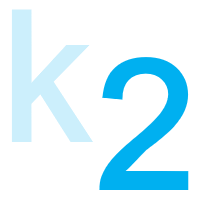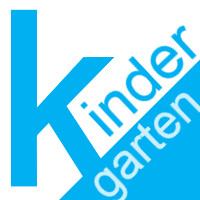K Grade English
Completion requirements
 Prioritized Standards
Prioritized Standards
 Standards Glossaries
Standards Glossaries
| K Grade English | 1st Grade English | 2nd Grade English |
 Standards Glossaries
Standards Glossaries
| 3rd Grade English | 4th Grade English | 5th Grade English |
 Standards Glossaries
Standards Glossaries
| 6th Grade English | 7th Grade English | 8th Grade English |
 Standards Glossaries
Standards Glossaries
| 9th Grade English | 10th Grade English | 11th Grade English | 12th Grade English |
 Standards Glossaries
Standards Glossaries
| HS Journalism | HS Speech |
| (L) Language |
ELA-00.L.01ELA-00.L.01 Demonstrate command of the conventions of standard English grammar and usage when writing or speaking.Sub-Standards:
Introduce:
a. Uppercase and lowercase letters.
b. Use question words (interrogatives). c. Produce complete sentences in shared language activities.
d. Common and proper noun.
e. Use regular plural nouns orally by adding /s/ or /es/. f. Use frequently occurring adjectives.
g. Use articles.
h. Use frequently occurring conjunctions (and, or, but). i. Use prepositions. Student Learning Targets:Knowledge Targets
Reasoning Targets
Skills (Performance) Targets
Proficiency ScaleThe Student can ...1 Beginning... with help, demonstrates a partial understanding of some of the simpler details and processes (Score 2.0 content) and some of the more complex ideas and processes (Score 3.0 content).Start 2 Developing... demonstrates no major errors or omissions regarding the simpler details and processes but exhibits major errors or omissions regarding the more complex ideas and processes (Score 3.0 content).Simple 3 Proficient“The Standard.”... demonstrates no major errors or omissions regarding any of the information and processes that were end of instruction expectations. Target 4 Advanced... demonstrates in-depth inferences and applications regarding more complex material that go beyond end of instruction expectations.Complex ResourcesVocabulary
Websites
| |||
ELA-00.L.01a
Student Learning Targets:Reasoning Targets
Skills (Performance) Targets
Product Targets
Proficiency (Rubric) Scale
ResourcesWebsitesVocabulary
| ||||||||||||||||||||||||||||||||||||||||
ELA-00.L.02ELA-00.L.02 Demonstrate command of the conventions of standard English capitalization, punctuation, and spelling when writing.Sub-Standards:
Introduce:
a. Recognize and name end punctuation.
b. Use end punctuation for sentences. c. Use conventional spelling for words with common spelling patterns and for frequently occurring irregular words. d. Spell untaught words phonetically, drawing on phonemic awareness and spelling conventions
e. Use conventional spelling for high-frequency and other studied words.
f. Spell grade-appropriate words correctly, consulting references as needed and/or using spelling patterns and generalizations (e.g., word families, position-based spelling, syllable patterns, ending rules, meaningful word parts).
Display proficiency in:
g. Capitalize the first word in a sentence and the pronoun I.
h. Write a letter or letters for most consonant and short-vowel sounds (phonemes). i. Spell simple words phonetically, drawing on knowledge of sound-letter relationships. | |
ELA-00.L.03 | |
ELA-00.L.04ELA-00.L.04 With guidance and support from adults, determine or clarify the meaning of unknown and multiple-meaning words and phrases based on kindergarten reading and contentSub-Standards:
a. Identify new meanings for familiar words and apply them accurately (e.g., knowing duck is a bird and learning the verb to duck).
b. Use the most frequently occurring inflections and affixes (e.g., -ed, -s, re-, un-, pre-, -ful, -less) as a clue to the meaning of an unknown word.
Student Learning Targets:Knowledge Targets
Reasoning Targets
Skills (Performance) Targets
Proficiency ScaleThe Student Will ...1 Beginning... with help, demonstrates a partial understanding of some of the simpler details and processes (Score 2.0 content) and some of the more complex ideas and processes (Score 3.0 content).Start 2 Developing... demonstrates no major errors or omissions regarding the simpler details and processes but exhibits major errors or omissions regarding the more complex ideas and processes (Score 3.0 content).Simple 3 Proficient“The Standard.”... demonstrates no major errors or omissions regarding any of the information and processes that were end of instruction expectations. Target 4 Advanced... demonstrates in-depth inferences and applications regarding more complex material that go beyond end of instruction expectations.Complex ResourcesVocabulary
Websites
| |||
ELA-00.L.05ELA-00.L.05 With guidance and support from adults, explore word relationships and nuances in word meanings.Sub-Standards:
a. Sort common objects into categories (e.g., shapes, foods) to gain a sense of the concepts the categories represent.
b. Demonstrate understanding of frequently occurring verbs and adjectives by relating them to their opposites (antonyms).
c. Identify real-life connections between words and their use (e.g., note places at school that are colorful).
d. Distinguish shades of meaning among verbs describing the same general action (e.g., walk, march, strut, prance) by acting out the meanings. Student Learning Targets:Knowledge Targets
Reasoning Targets
Skills (Performance) Targets
Proficiency ScaleThe Student Will ...1 Beginning... with help, demonstrates a partial understanding of some of the simpler details and processes (Score 2.0 content) and some of the more complex ideas and processes (Score 3.0 content).Start 2 Developing... demonstrates no major errors or omissions regarding the simpler details and processes but exhibits major errors or omissions regarding the more complex ideas and processes (Score 3.0 content).Simple 3 Proficient“The Standard.”... demonstrates no major errors or omissions regarding any of the information and processes that were end of instruction expectations. Target 4 Advanced... demonstrates in-depth inferences and applications regarding more complex material that go beyond end of instruction expectations.Complex ResourcesVocabulary
Websites
| |||
ELA-00.L.06ELA-00.L.06 Use words and phrases acquired through conversations, reading, being read to, and responding to texts.Student Learning Targets:Knowledge Targets
Reasoning Targets
Skills (Performance) Targets
Proficiency ScaleThe Student Will ...1 Beginning... with help, demonstrates a partial understanding of some of the simpler details and processes (Score 2.0 content) and some of the more complex ideas and processes (Score 3.0 content).Start 2 Developing... demonstrates no major errors or omissions regarding the simpler details and processes but exhibits major errors or omissions regarding the more complex ideas and processes (Score 3.0 content).Simple 3 Proficient“The Standard.”... demonstrates no major errors or omissions regarding any of the information and processes that were end of instruction expectations. Target 4 Advanced... demonstrates in-depth inferences and applications regarding more complex material that go beyond end of instruction expectations.Complex ResourcesVocabulary
Websites
| |||



 Kindergarten
Kindergarten